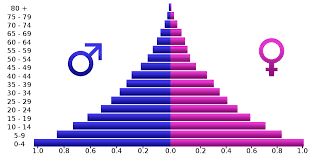- Books Name
- Learn with me Social Science Book
- Publication
- Learn with me publication
- Course
- CBSE Class 9
- Subject
- Social Science
Population Growth and Processes of Population Change
- The numbers, distribution and composition of the population are constantly changing. Hence population is a dynamic phenomenon.
- Growth of population refers to the change in the number of inhabitants of a country/territory during a specific period of time.
- Since 1982 India’s population growth rate is on the decline.
- When more than a billion people increase even at lower rate, the total numbers added becomes very large.
- The declining trend of the growth rate is indeed a positive indicator of the efforts of birth control.
- The natural increase of population is the difference between birth rates and death rates.
- The number of death per thousand persons in a year is the Death Rate.
- Migration is the movement of people across regions and territories.
- Migration can be internal and international.
- Migration changes not only population size but also the population composition of urban and rural populations in terms of age and sex composition.
- Pull and push are the factors responsible for migration.
- The age composition of a population refers to the number of people in different age groups in a country.
- The population of a nation is generally grouped into three broad categories, namely children (generally below 15 years), working age (15 – 59) years) and aged (above 59 years).
- Sex ratio is defined as the number of females per thousand males in the population.
- The sex ratio in India has always remained unfavorable to females.
- Keral has the highest sex ratio whereas Delhi and Haryana are amongst lowest.
- A person of seven years of age or above who is able to read and write with a certain understanding is called a literate.
- Males have more literacy than females.
- The distribution of the population according to different types of occupation is referred to as the occupational structure.
- Primary activities include agriculture, animal husbandry, forestry, fishing, mining and quarrying etc. Secondary activities include manufacturing industry, building and construction work etc. Tertiary activities include transport, communications, commerce, administration and other services.
- Sustained efforts of government programmes have registered significant improvements in the health conditions of the Indian population. Death rate is considerably reduced.
- It is a matter of concern that the per capita calorie consumption is much below the recommended level in India.
- Adolescent population constitutes one fifth of the total population of India.
- Adolescents in India face the problem of malnutrition that can be dealt with by spreading awareness, literacy and education among them.
- The Family Welfare Programme has sought to promote responsible and planned parenthood on a voluntary basis.
National Population Policy 2000 aims at improving conditions of adolescents, aiming at encourages delayed marriages and child bearing, educating about risks of unprotected sex and provisions for nutritional needs


 Learn with me publication
Learn with me publication
